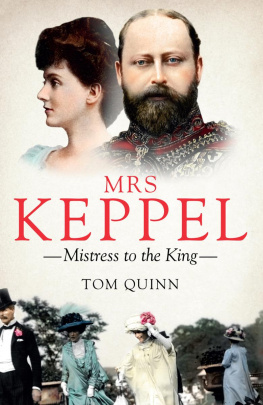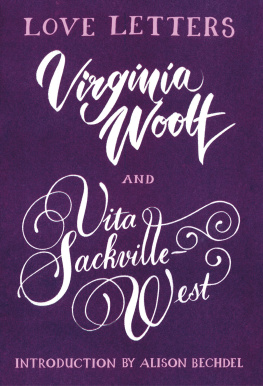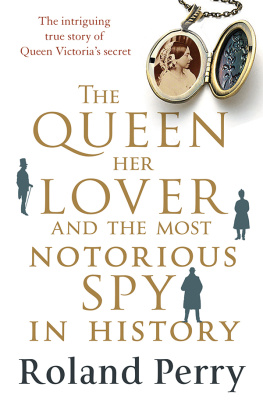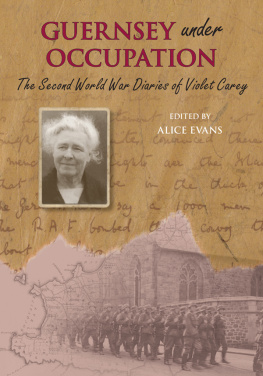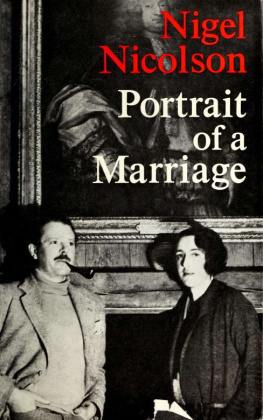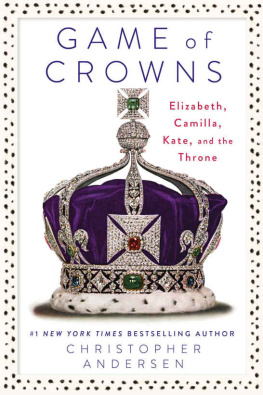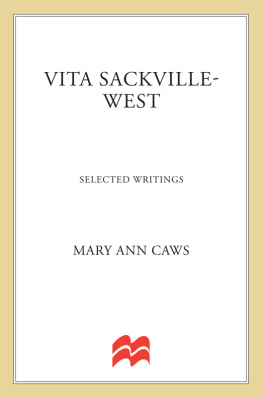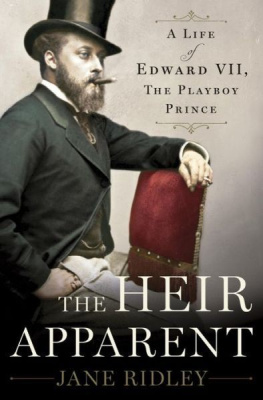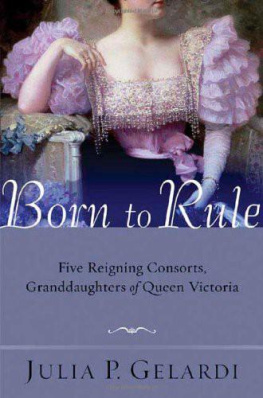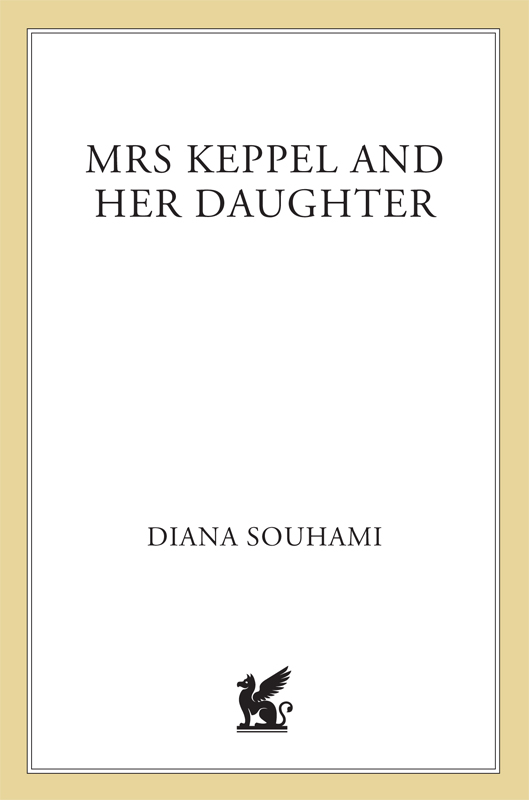Contents
Guide

The author and publisher have provided this e-book to you for your personal use only. You may not make this e-book publicly available in any way. Copyright infringement is against the law. If you believe the copy of this e-book you are reading infringes on the authors copyright, please notify the publisher at: us.macmillanusa.com/piracy.
Contents
A Personal Note
Violet Trefusiss letters to Vita Sackville-West suggested this book to me. Written between 1910 and 1920, immediate, unedited, passionate, they are a cry from the heart quite unlike the polished style she contrived for her novels. Most are collected in the volume Violet to Vita published in 1989, others are at the Beinecke Library, Yale. They give Violets version of her affair with Vita. Romantic, overstated, eloquent, they testify to the destruction of love.
Behind these letters lies a story of more than thwarted love. Its essence is hypocrisy and double standards, of high social standing for Violets mother, Alice Keppel, and of silence and exile for Violet.
Mrs Keppel loved profitably. La Favorita of Edwardian high society, she was the mistress of Queen Victorias son Bertie, when he was Prince of Wales then King Edward VII. It was an affair that brought her social splendour and great riches. Memoirs, diaries and her own letters give evidence of her style. Those old enough to remember her her niece Lady Cecilia McKenna, the Contessa Visconti who knew her in Florence told me I could not imagine the scale of her entertaining, the lavishness of her houses, the silver, the servants, the dinners for seventy.
Violet saw her mother as luminous, resplendent, dazzling, a paragon of romance. But her mother had impressive practicality. Confident, assertive, determined, she was not going to stand by while her daughter became declass and a social pariah and tarnished the family name.
Mrs Keppel and the King conducted their extra-marital relationship with discretion, propriety and unwavering confidence. Violet described herself as struggling with frightening emotions in uncharted waters. There were no rules for her sort of love, no discussion of it.
The law neither condoned nor condemned. A move to legislate was made in 1921. A Tory MP, Frederick Macquister, proposed a clause Acts of Gross Indecency by Females to the Criminal Law Amendment Act. In the House of Commons he deplored the decline in female morality, averred that lesbianism induced neurasthenia and insanity, debauched young girls, threatened the birth rate and was due to an abnormality of the brain. His clause was passed. Pat Dansey, Violets go-between, wrote to Vita:
One thing I did urgently want to call your attention to was The Criminal Law Amendment Bill and the clause that was inserted in the Bill at the third reading. It only makes me implore you to be careful for your own sake as well as Violets.
She need not have feared. The debate moved to the House of Lords. Their lordships speculated on the effect of breaking silence. Lord Desart of Desart Court, Kilkenny, former Director of Public Prosecutions, said:
You are going to tell the whole world there is such an offence, to bring it to the notice of women who have never heard of it, never thought of it, never dreamed of it. I think this is a very great mischief.
Lord Birkenhead, Lord Chancellor, concurred:
I am bold enough to say that of every thousand women, taken as a whole, 999 have never even heard a whisper of these practices. Among all these, in the homes of this country, the taint of this noxious and horrible suspicion is to be imparted.
It was not a crisp debate. The clause was rejected. The underlying directive dont talk about it prevailed.
Vita Sackville-West in 1920 wrote her account of her affair with Violet Trefusis, then locked her confession away in a leather bag. Neither wrote openly about it after it reached its stormy end. They talked of together writing a better Well of Loneliness but this did not happen. Both wrote roman clefs about their love for each other but coded these in heterosexual show for the sake of their mothers, husbands and reputations.
Vita died in 1962, Violet ten years later. Some months after Violets death, Nigel Nicolson, Vitas son and executor, published his mothers confession, her De Profundis as he called it. In a decade of knowing about the manuscript he had not shown it to his father, Harold Nicolson, who died in 1968, or to Violet. It was not, in his judgement, a story to be aired while either was alive.
He interpolated his mothers account of 20,000 words, with 50,000 words of his perspective on it and gave his book the title Portrait of a Marriage, not Portrait of a Lesbian Relationship which was how she had written her story. He set her affair with Violet into the context of the subsequent years of her long, peaceable and supportive marriage to Harold Nicolson. He offered the book as a panegyric to his parents marriage and called the story, in his introduction to the 1992 reissue, the triumph of love over infatuation. It is a love story, not the love between Vita Sackville-West and Violet Trefusis, as many people assumed, but between Vita and my father Harold. The hero of the story is his father, whom he described as rock-like and angelic and whose determination and understanding saved the marriage.
Violet is the villainess. Remember that Violet was evil he said to me when I visited him at Sissinghurst Castle in Kent in 1993 to talk about this book. In his introduction to a collection of his parents letters to each other he wrote of Violets pernicious influence and cynical wickedness. In letters to Violets executor, John Phillips, he wrote of her intolerable conduct and abominable character. His dislike of her was not personal, for all he remembered of her were her French clothes and perfume when once or twice, in her later life, she visited his mother at Sissinghurst. It stemmed from his deep regard for his father. I wish Violet was dead, Harold wrote to Vita in September 1918, she has poisoned one of the most sunny things that ever happened. He compared her to some fierce orchid, glimmering and stinking in the recesses of life. She was, he said, tortuous, erotic, irresponsible, absolutely unscrupulous, irremediable and a reptile.
In December 1972, three months before Portrait went to press, Nigel Nicolson wrote to John Phillips warning him that quotation in the book from his fathers letters and mothers diaries would certainly put the reader against Violet:
I cannot help that because I believe it to be true. Let her be a devil in a scarlet cloak for those two years, and think that a devil is more interesting and dramatic than a saint in wings.
Those who see through different eyes draw different portraits. I do not see Violet for those years as a devil in a scarlet cloak. And though Vita may well have been a successful wife as vouched for by her son and executor, her sexual prescription in Portrait of a Marriage was of little use to her women lovers who did not want to be marginalized or abandoned.
Violet wanted a context for her love. I HATE, she wrote to Vita in 1920,
the furtiveness and dissimulation, the petty hypocrisies and deceits, the carefully planned assignations, letters that must be given not posted. It revolts and nauseates me.
She wanted an open relationship with Vita, which was not a villainous desire. Context, for Vita and Harold was their property, gardens, work, friends, marriage, family. They each took same-sex lovers but made it a rule that these affairs were always on their own terms. They talked about their marriage in a BBC broadcast in 1929 a year after The Well of Loneliness was judged obscene and banned and said it was the greatest of human benefits, guided by a common sense of values, respect and give and take.


